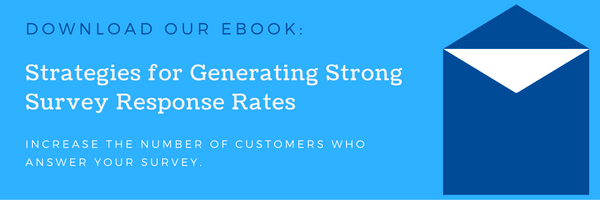What steps should companies take to ensure they are getting an accurate picture of what’s going on across their customer base? It’s a big question—and an important one to answer before you start relying on customer survey data internally.
In fact, we created a video to specifically cover survey data quality:
One of the biggest risks to any survey or Net Promoter program is your company making decisions based on bad data. And a number of factors can affect the accuracy and usability of your survey data, including:
- Lengthy surveys that lead to non-response or abandonment
- Using unclear wording for questions
- Providing illogical response options / scales
Missteps in survey creation can unintentionally skew results from the very beginning. If these aren’t corrected prior to launching a customer survey, you could land in an endless cycle of bad results informing bad decisions, which can lead to disastrous decisions.
To ensure you have quality, trustworthy, and representative data, put a strong emphasis on the following areas as you look to create or improve your customer surveys.
Survey Contact List
Do: Confirm customer contact information is comprehensive and up to date.
Aggregating the respondent list for your survey may require some effort. At the very minimum, it should include names and basic contact information – typically an email address for online surveys or a phone number if you will be calling.
When building the list of contacts for your survey, keep in mind some of the ways you may want to analyze the survey feedback. For this reason, we strongly recommend to clients that, in addition to verifying that email addresses are correct and contact names are spelled correctly, each contact include demographic data so you will be able to analyze the data along specific customer segments once the survey is closed
Survey Response Rate
Do: Evaluate survey response rates to ensure that your data is statistically valid and representative of your customer database.
The quality of your customer survey data can be dramatically off-base if you don’t have enough respondents to generate valid results and analysis. This can certainly have a major effect on the way you make decisions based on survey data.
By only capturing the views of a small number, it’s risky to extrapolate those views to apply to all your customers, which may lead you to making decisions that cater to a vocal minority.
For a more in-depth discussion on this topic, please read our article on survey data collection and download our EBook on improving survey response rates:
Customer Survey Design
Do: Design your customer survey in accordance with best practices.
There are many considerations for designing a survey – layout, questions, response options, conditional logic, pre-testing, and addressing technical problems and other issues. This article does an excellent job at covering many of the basics.
Always remember that for quality data, your surveys should be relevant, focused, and unambiguous. As a general rule, the shorter the survey, the more of your audience will open the survey and fewer respondents will abandon it before completion. Depending on the goal, we recommend a customer survey contain between two and fifteen questions.
Survey layout should be logical and adhere to a pattern based on your research objectives, while questions and response options should be clear and structured around the specific feedback you want to obtain.
Reliable Customer Feedback
Do: Keep an eye out for any “gaming” that may be taking place inside your company.
Whether it’s intentional or not, there are many opportunities to game results and lower the quality of your survey data.
For instance, if employee performance reviews or bonuses are tied to the results of survey data, beware of attempts to interfere with how surveys are created and sent—anything from purposefully avoiding best practices to making sure only happy customers receive an invitation to provide feedback.
That’s why it’s best not to place too much emphasis on the scores and instead shift the focus to improving the customer’s experience. This will help ensure everyone is paying attention to what customers want or value.
Benefits of Accurate Survey Data
Customer surveys can be a powerful tool for helping you obtain honest feedback from your customers. That’s why it’s important to respect the purpose of surveying and treat the process with as much strategy and consideration as you would any other part of your business.
Implemented poorly and you’ll never know how you’re really perceived among your customer base. Implemented well and you’ll be on the receiving end of valuable insight you can use to inform business decisions and make improvements that bring in even more satisfactory answers on your next survey.


